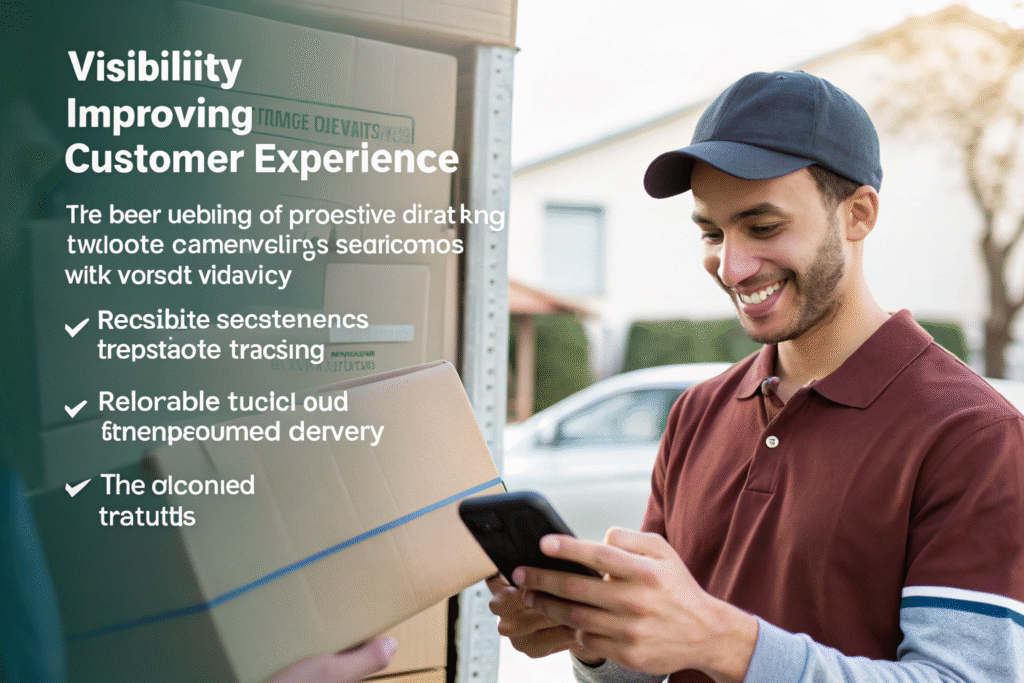Supply chain visibility has become one of the most important topics in international trade. You might be wondering why your goods sometimes feel like they disappear between factories, ports, and warehouses. Without clear visibility, businesses face risks such as unexpected delays, hidden costs, and unhappy customers.
Freight forwarders can significantly improve visibility in your supply chain. What needs to be emphasized here is that with digital tracking tools, transparent reporting, and global partnerships, forwarders provide the insights businesses need to stay competitive.
Let’s take a moment to think this through together: when you can see where your goods are at all times, you can plan inventory better, respond to disruptions faster, and keep your clients satisfied.
How Do Freight Forwarders Use Technology to Track Shipments?
You might be wondering, “How exactly do forwarders track shipments in real time?” The answer lies in advanced logistics technology that connects carriers, customs, and warehouses into one platform.
Freight forwarders use GPS, RFID, and digital platforms to provide end-to-end shipment visibility. What needs to be emphasized here is that these technologies give clients access to accurate updates 24/7.

What role does real-time tracking play in logistics?
Let’s take a moment to think this through. Real-time tracking prevents uncertainty by showing where cargo is at any given moment. Platforms such as MarineTraffic for vessels or FlightAware for aircraft provide live data that forwarders integrate into their systems. This level of visibility helps companies adjust schedules when disruptions happen.
How do digital dashboards simplify supply chain management?
You might be wondering if too much data creates confusion. The opposite is true. Dashboards from providers like CargoWise or Flexport summarize shipments, customs status, and delivery milestones in one place. Let’s take a moment to think this through together: by giving businesses a single view of all cargo, forwarders reduce stress and simplify decision-making.
How Does Visibility Reduce Supply Chain Risks?
Visibility is not only about knowing where goods are. You might be wondering, “How does it actually reduce risks?” The truth is, hidden delays and unexpected costs are usually the result of poor visibility.
Freight forwarders reduce supply chain risks by forecasting disruptions, monitoring customs clearance, and ensuring accurate documentation. What needs to be emphasized here is that visibility helps businesses respond before small issues become major losses.

How does proactive risk management work?
Let’s take a moment to reflect. If a port strike is about to happen, real-time visibility allows forwarders to reroute cargo before it is stuck. Platforms like Project44 and FourKites provide predictive analytics that empower forwarders to act early. You might be wondering how this impacts your business—what it means is fewer delays, lower costs, and more reliable delivery promises.
Why does customs visibility matter?
You might be wondering why customs clearance often causes hidden delays. With proper visibility, businesses know in advance whether documents are missing or tariffs have changed. Let’s think this through together: when forwarders monitor updates from U.S. Customs and Border Protection or European Commission customs rules, they ensure your goods avoid unnecessary holds.
Can Freight Forwarders Improve Collaboration Across Partners?
Supply chains often involve multiple parties: manufacturers, carriers, customs, and distributors. You might be wondering, “How can one forwarder bring everyone together?”
Freight forwarders improve collaboration by acting as the central communication hub between all supply chain partners. What needs to be emphasized here is that with shared platforms, updates flow smoothly, reducing misunderstandings.

How do shared platforms build trust?
Let’s take a moment to think this through. Shared platforms like Infor Nexus connect buyers, sellers, and forwarders in one digital space. By seeing the same data, everyone trusts the process more and reduces conflict. You might be wondering how this affects day-to-day operations—the answer is smoother communication and fewer disputes.
Why does transparent communication matter?
You might be wondering if communication really changes logistics performance. The answer is yes. According to Logistics Management, lack of communication is a top cause of supply chain delays. Let’s take a moment to reflect: when forwarders provide timely updates, all partners stay aligned and business runs more efficiently.
How Does Visibility Improve Customer Experience?
At the end of the day, you might be wondering, “How does visibility help my customers?” The answer is simple: better visibility means happier clients.
Visibility improves customer experience by ensuring reliable delivery times, accurate order tracking, and proactive updates. What needs to be emphasized here is that transparency builds trust between businesses and their buyers.

Why do reliable delivery times matter for buyers?
Let’s take a moment to reflect. Customers hate surprises in delivery. By using forwarders who provide visibility, companies can keep promises. For instance, UPS Supply Chain Solutions highlights the value of predictable schedules. You might be wondering what this means for your company—simply put, it gives you the power to serve your customers with confidence.
How do proactive updates enhance trust?
You might be wondering why updates are so important. Instead of waiting for problems to appear, proactive communication keeps customers informed. According to DHL Global Forwarding, proactive visibility is a key driver of customer loyalty. Let’s take a moment to think this through together: by keeping clients updated before they even ask, you build trust that lasts.
Conclusion
Let’s take a moment to think this through together: without visibility, supply chains become risky, costly, and frustrating. With visibility, they become predictable, stable, and profitable.
Freight forwarders improve supply chain visibility with advanced tracking tools, risk forecasting, partner collaboration, and customer-focused updates. What needs to be emphasized here is that this visibility is not a luxury—it is a necessity in today’s fast-paced trade.
By partnering with a reliable freight forwarder like GeeseCargo, you gain not only smoother shipping but also a competitive edge in global business.









